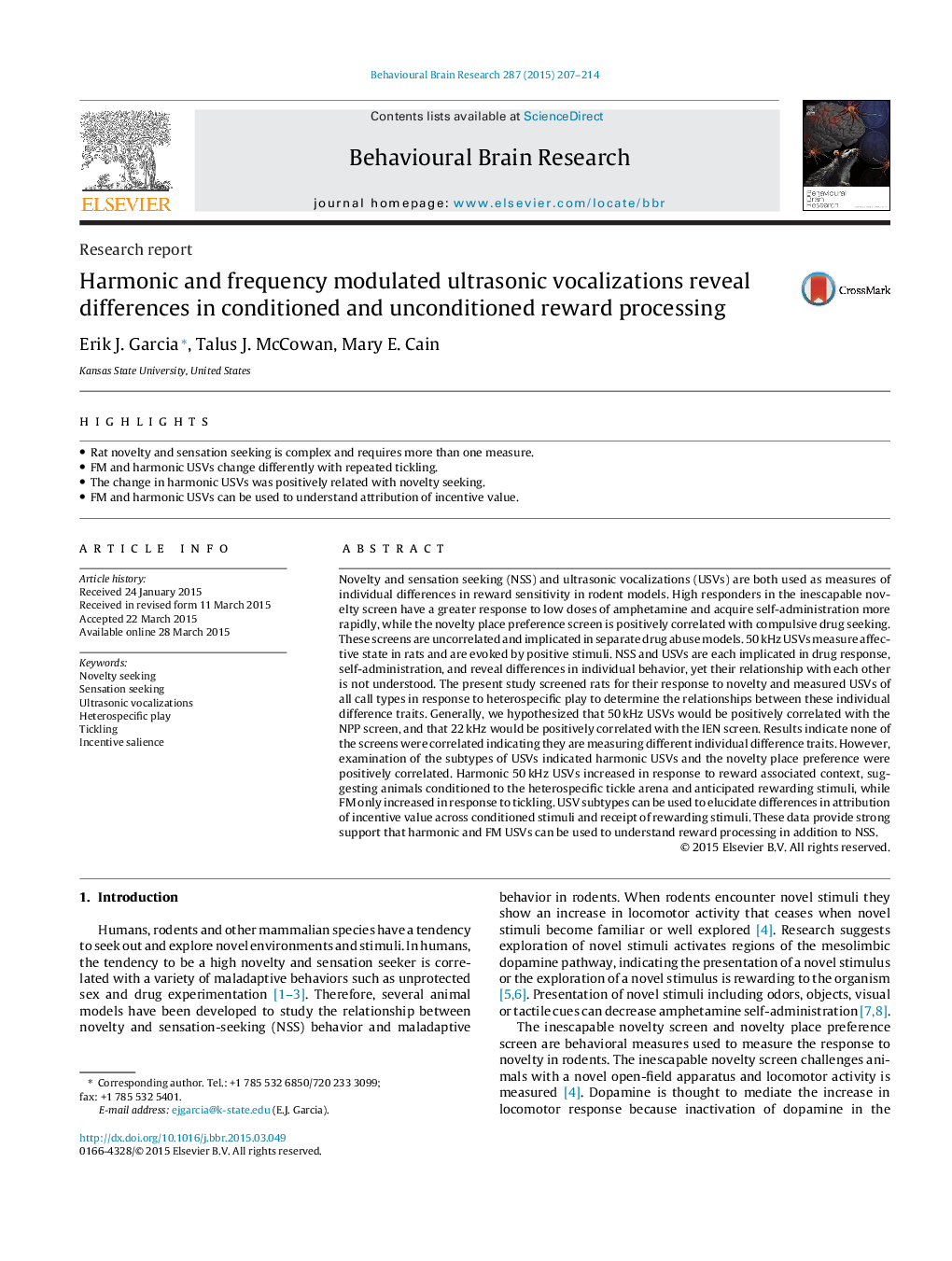| کد مقاله | کد نشریه | سال انتشار | مقاله انگلیسی | نسخه تمام متن |
|---|---|---|---|---|
| 6256909 | 1612945 | 2015 | 8 صفحه PDF | دانلود رایگان |
- Rat novelty and sensation seeking is complex and requires more than one measure.
- FM and harmonic USVs change differently with repeated tickling.
- The change in harmonic USVs was positively related with novelty seeking.
- FM and harmonic USVs can be used to understand attribution of incentive value.
Novelty and sensation seeking (NSS) and ultrasonic vocalizations (USVs) are both used as measures of individual differences in reward sensitivity in rodent models. High responders in the inescapable novelty screen have a greater response to low doses of amphetamine and acquire self-administration more rapidly, while the novelty place preference screen is positively correlated with compulsive drug seeking. These screens are uncorrelated and implicated in separate drug abuse models. 50Â kHz USVs measure affective state in rats and are evoked by positive stimuli. NSS and USVs are each implicated in drug response, self-administration, and reveal differences in individual behavior, yet their relationship with each other is not understood. The present study screened rats for their response to novelty and measured USVs of all call types in response to heterospecific play to determine the relationships between these individual difference traits. Generally, we hypothesized that 50Â kHz USVs would be positively correlated with the NPP screen, and that 22Â kHz would be positively correlated with the IEN screen. Results indicate none of the screens were correlated indicating they are measuring different individual difference traits. However, examination of the subtypes of USVs indicated harmonic USVs and the novelty place preference were positively correlated. Harmonic 50Â kHz USVs increased in response to reward associated context, suggesting animals conditioned to the heterospecific tickle arena and anticipated rewarding stimuli, while FM only increased in response to tickling. USV subtypes can be used to elucidate differences in attribution of incentive value across conditioned stimuli and receipt of rewarding stimuli. These data provide strong support that harmonic and FM USVs can be used to understand reward processing in addition to NSS.
Journal: Behavioural Brain Research - Volume 287, 1 July 2015, Pages 207-214
